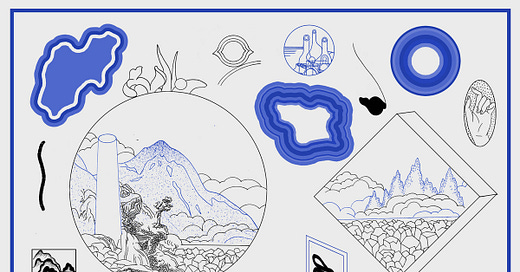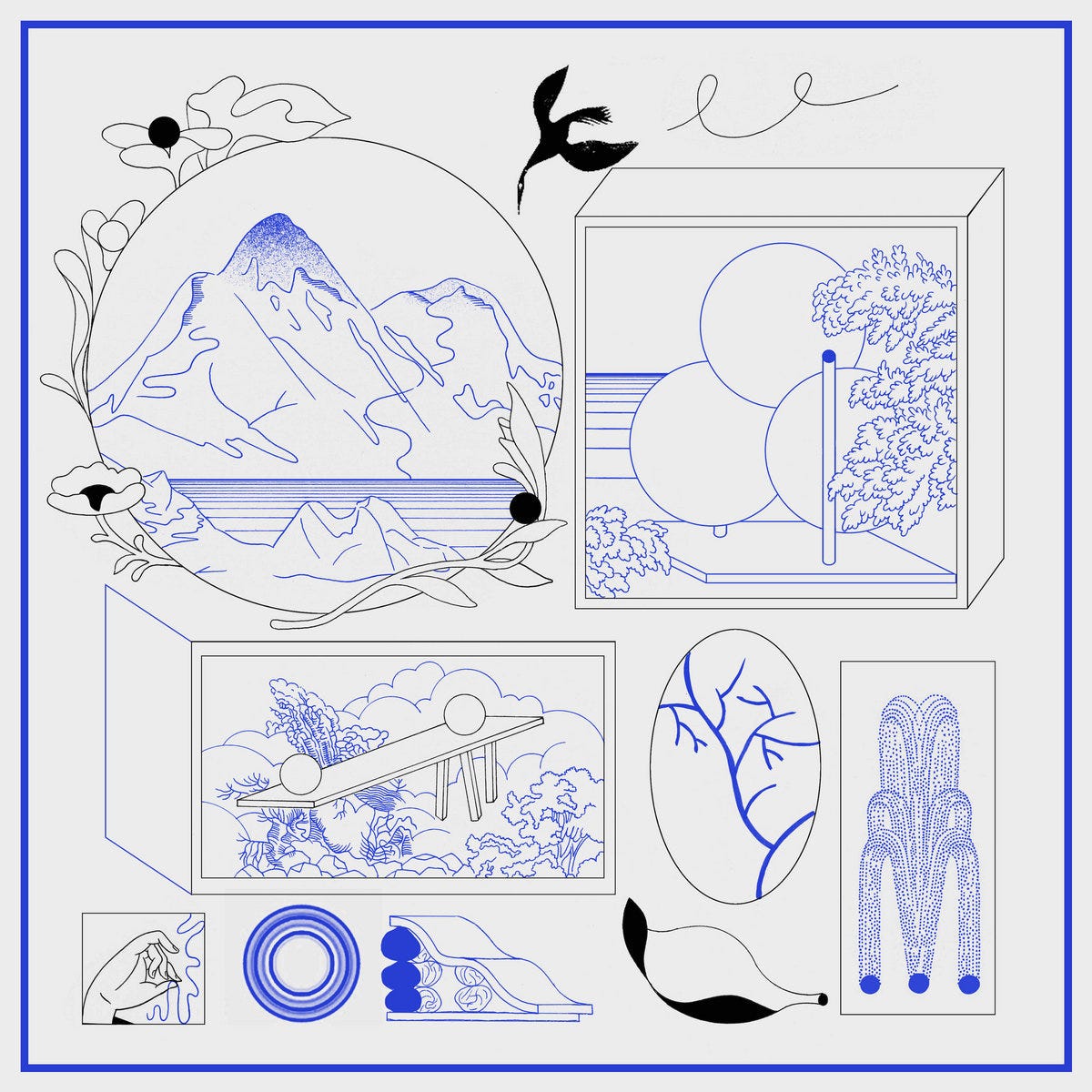“I’ve got a truant heart, I just want to be gone. I’d be in the kitchens, the corridors at work, and I’d be staring at the panels on the roof, clocking all the maintenance doors, dreaming about getting into the airducts. A portal.” —Burial, as interviewed by Mark Fisher, from ‘Ghosts of My Life: Writings on Depression, Hauntology, and Lost Futures’
“The Artist’s Way: A Spiritual Path to Higher Creativity” by Julia Cameron is a famous self-book aimed at artists and people who want to be artists. The text, which is comprised of various techniques and rituals, purports to foster your creative spirit, bolster your confidence, and help you attune to the spiritual aspect of your artistry. I understand it to be a titan self-help document, the thing that makes the rest of the genre look good.
It’s the kind of book whose testimonies are practically part of the text itself—N told me about the book and said something along the lines of, oh, V read this book, it changed her life and got her to do some soul-searching, I read this book and it helped me a lot too. Supposedly the text is legit, espoused by Bard College students and TinyLetter expatriates as a life-changing document. One can’t help but picture creative retreats, windswept glades, big backpacks, a look of contentment on your face that betrays a rich inner world. Because of course! More than any other genre of lit, the self-book is the one that roots itself most deeply in a person’s life. It has prescriptions, solutions, and action steps, which are not as sexy as themes and motifs, but are much more useful for unlocking an elevated life. That’s “The Artist’s Way” for ya.
So a brief dalliance with “The Artist’s Way” at N’s recommendation had me up at godly hours. The book’s first set of exercises involve beginning your mornings with x minutes of continuous journalling to empty the mind. The ritual didn’t stick for long—I was already gratitude journalling some nights by prescription of a previous therapist. Cameron also assumes a certain class position of its reader, and suggests activities that are only possible for people with free weekends and a great surplus of disposable income, like taking yourself out on artist dates. I too would like to take a Bumi & Ashe pottery class, but I’m busy right now.
Still, I was excited to enter what I was describing to Mags as my “woo-woo era,” a hard 180 degree turn from a lifestyle of hourly doom-scrolling and grief-sipping. Love me some woo-woo. Mags owns a small collection of beautiful crystals, which work to purify her dwelling place while attracting good fortune. My plastic dice do the same for me, I think, in a gameplay sense. I was quite ready to turn that unfounded whimsy up to max levels, with burning incense and tie dye harem pants. I’m being glib. What I mean is I wanted to be more human without worrying too much about being human.
“Failure to Cope ‘Under Capitalism’” by Clare Coffey is an article I found germane to what I was feeling. In it, Coffey laments the popular rhetorical tendency to invoke capitalism as the ultimate systemic explanation for all helplessness, the great unassailable thing that precludes any self-actualization. Coffey writes:
“Capitalism, in this rhetorical strain, is not so much the object of analysis or a concrete historical phenomenon as an all-purpose gesture. ‘Capitalism’ is useful everywhere: as the punchline of self-deprecating jokes about the way we live now, as a perennial-but-distant bogeyman that explains chronic frustrations without ever causing enough pain to force serious disruption. Most importantly, its invocation immediately establishes a phenomenon in the realm of the political, without any further work required.”
On some level, those of us who lean on this invocation to cope know how poisonous it can be, and so we seek ways to alleviate it. I think that’s where a lot of “smooth brain” and “no thoughts, head empty” quips come from, this compulsion to abandon barbed thought processes in favor of a more decidedly woo-woo mindset. Do you get what I’m saying?
What I really wanted was a rewiring of my mindset that could allow me to eat, drink, sleep, and create without thinking about decay and collapse every five minutes.
Coffey goes: “It may be the case that many personal infirmities can only be fully repaired in a repaired world, but this does not obviate the need to pull ourselves together as best we can in this broken one.” That’s the play of the game, the meta’s most viable strat. I must think this way if I am expected to pay rent and association dues, make flavorful broths, give my love to my beloved, and attune to my creative spirit. The alternative is rot.
N told me about “The Artist’s Way” in February, and I tried to give the book a fair shake at around April or May when I was finalizing moving into a loft situation in Gateway Garden Heights. Splitting time. Grab fare. You know how it is. I was transient as all hell, and the struggle to put down good roots doesn’t bode well with a book that expects you to already be anchored to a space with houseplants. To Cameron and N’s credit, I was reading a little more, watching the sun pour in and catch swirls of dust in a slow-scanning beam. I let the water boil for the coffee. I open up my Outlook calendar. I watch the algae bloom green on my balcony and schedule in my head when I ought to bring out the muriatic acid, and scrub.
Hello! It’s been a while. I’ll try to put out a couple more of these year-end reflections before the year ends. Thank you for reading me.




